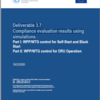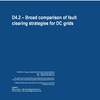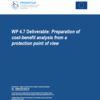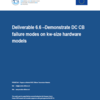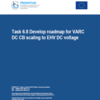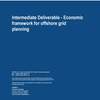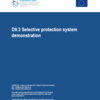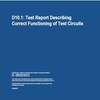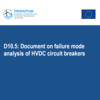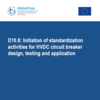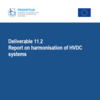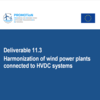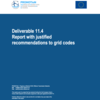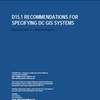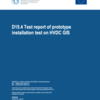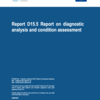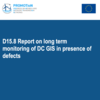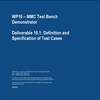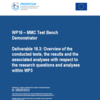Requirements for meshed offshore grids

This deliverable lists the qualitative set of requirements for the Meshed Offshore Grid (MOG) that is used throughout the project.
Deliverable 1.2 has the general objective of defining the requirements that should be met by an offshore HVDC grids and the wind farms connected to it.
This deliverable brings together existing studies of offshore meshed HVDC grids and synthesizing them in order to create a baseline.
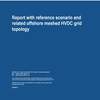
The newly released deliverable 1.4 of Work Package 1 has the purpose to provide relevant scenarios for potential installed wind capacities in the Northern Seas and load/generation of surrounding countries based on available informatio.
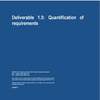
Deliverable 1.5: Quantification of requirements
Deliverable 1.5 contains definitions of which requirements are quantifiable and presents a list of the quantified requirements of a Meshed Offshore Grid (MOG).
Deliverable 1.6 develops a draft offshore grid expansion roadmap for the evacuation of offshore wind energy from the North Sea during the decade 2020-2030. It also studies the economic viability of HVDC offshore meshed grids by comparing their costs and benefits with radial point-to-point connections of offshore wind farms.

This deliverable lists the updated and evaluated qualitative and quantitative set of requirements for the Meshed Offshore Grid (MOG) that is used throughout the project. The work packages within PROMOTioN set out to address various interdependent barriers. Alignment of the project deliverables is enhanced by early agreement on requirements and identification of the gaps to be addressed in Work Package 1. In this Deliverable 1.7, the requirements are updated from previous deliverables D1.1 and D1.5, following updates from various Work Packages.
Grid Topology & Converters
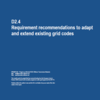
Based on the work in WP2, this deliverable (D2.4) compiles requirement recommendations to adapt and extend existing network codes (NCs) for high voltage direct current (HVDC) systems which are in interaction with HVAC transmission grids. The focus is on the converters’ DC point of connection (PoC) and the AC PoC onshore, while both point-to-point HVDC links and meshed HVDC systems are addressed.
Wind Turbine – Converter Interaction
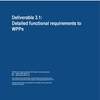
Deliverable 3.1: Detailed functional requirements to WPPs
In this deliverable, a set of requirements for the DRU (Diode Rectifier Unit) connected offshore wind farm is given as a basis for the control and compliance procedure development in Work Package 3.
Deliverable 3.2 has main objective to identify and specify appropriate analyses and tests to demonstrate the interoperability of wind turbine and wind power plant controls with two different types of HVDC systems: diode rectifiers and VSC converters respectively to connect the wind power plants to the DC network.
This deliverable is part of Task General Control Algorithms, which includes the simulation results of the DRHVDC system in normal operation and during faults. It shows the considered general OWFs connected with point-to-point DR-HVDC link and presents the results of the DR-HVDC system during normal operation, which covers energization, connection and disconnection of the offshore AC grid, operating point dynamic changing in different configurations as specified in D3.2. The ancillary services provided by the DR-HVDC system is addressed in D3.5. Furthermore it focuses on the fault ride-through and protection of the DR-HVDC system and various fault cases are analysed, i.e., onshore grid fault, DC cable fault, internal DRU fault, umbilical AC cable fault, and offshore fault. The performances of the DR-HVDC during the fault and after fault isolation are addressed.
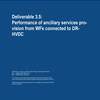
This deliveable includes the specification of control strategies, definition of test cases, implementation of control strategies and test cases, and stability assessment and tuning of controllers. It covers the assessment of the capabilities of offshore wind farms (offshore WFs, OWFs) to contribute in the provision of ancillary services to onshore alternating-current (AC) networks by means of active power modulation, when connected through high-voltage direct-current (HVDC) links having diode rectifier (DR) offshore terminals and voltage source converter (VSC) onshore terminals. In doing so, the compatibility of corresponding higher-level controls previously devised for VSC-HVDC-connected OWFs is examined.
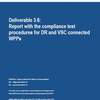
This report summarises the results of Task 3.3 “Compliance evaluation procedure”. In the Deliverable 3.6, evaluation procedures for compliance of the DRU connected OWFs to the requirements specified in Deliverable 3.1 are the main focus. In WP3 and also in this report, the main focus has been set on DRU-HVDC connection, since the VSC-HVDC connection is seen as a proven technology of today. Nevertheless, VSC-HVDC is still being investigated throughout the work package when there is room for further developments.
This report is part of Task 3.4 “Compliance evaluation based on detailed numerical simulations”. The main aim of this report is to show the results of the compliance evaluation of the Wind Turbine Generator (WTG) Grid Side Converter (GSC) and WPP controllers, when operating as Grid Forming Converters.
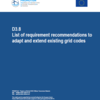
This document provides a List of requirement recommendations to adapt and extend existing grid codes with the focus on the recommendations to cover the Diode Rectifier Unit (DRU) concept, which has been studied in detail in WP3 of PROMOTioN.
DC Grid protection system development
In this deliverable, a method for shallow assessment of fault clearing strategies is developed and used to benchmark the fault clearing strategies available in the literature.
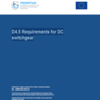
Deliverable 4.5: Requirements for DC switchgear
This deliverable proposes general requirements of DCCBs based on results obtained in the PROMOTioN project, particularly in work package WP4 and WP6.
This deliverable presents the contributions of Work Package 4.5 of PROMOTioN project’s Work Package 4. It proposes a Cost-Benefit Analysis (CBA) approach from a DC protection point of view, i.e. to investigate the impact of DC grid protection and different DC protection strategies on the overall CBA. The main objective is to investigate to what level of detail DC grid protection needs to be integrated in CBA studies, in particular for the studies performed within the PROMOTioN project, on the topologies developed in WP12.
Test environment for HVDC circuit breakers

Deliverable 5.1: HVDC Network Fault Analysis
This deliverable looking at the test environment of HVDC circuit breakers targets the HVDC network fault analysis.
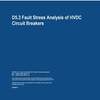
Deliverable 5.3: Fault Stress Analysis of HVDC Circuit Breakers
This deliverable provides a fault stress analysis of HVDC circuit breakers within Work Package 5, which looks at the test environment of HVDC circuit breakers.

Deliverable 5.4: Documents on test requirements
To date, there is no international standard describing the requiremensts, applicable tests and test procedures of HVDC circuit breaker. This document provides a general guideline for list of tests that shall be applied to HVDC circuit breakers for its operation and performance verification. Since there is no international standard for HVDC circuit breakers, the document is compiled using AC circuit breaker standards, CIGRE technical brochures, VSC converter valve standard and Chinese draft standard for HVDC circuit breakers as references.

Deliverable 5.5: Documents on test procedures
This document provides general information and guidelines for conducting tests of HVDC circuit breakers. In order to verify the test requirements defined in deliverable 5.4, the type of tests and sequence of execution, number of tests and pass/fail criteria are described.

This document provides an overview and comparison of the various test circuits and their limitations, which can be used to realise the current breaking test requirements and procedures discussed in D5.4 and D5.5, respectively. The test circuits’ performance is compared to the test requirements. Methods to set-up and tune the test circuits’ parameters are presented. Approaches such as multi-part testing unit testing and synthetic testing, which seek to maximally test functionality and verify ratings within the test circuit’s limitations, are discussed.
HVDC circuit breaker performance characterization
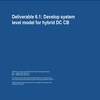
Deliverable 6.1: Develop system level model for hybrid DC CB
The main objective of this deliverable is developing system level models for selected hybrid DC CBs in PSCAD and EMTP.
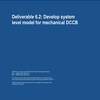
Deliverable 6.2: Develop system level model for mechanical DCCB
The objective this deliverable is the development of a PSCAD system-level model of the mechanical DC circuit breaker with active current injection.

Deliverable 6.5: Low Voltage Hardware Demonstrators of DC CBs
This report presents the results of task 6.5 of the work package WP6 “Develop kW-size hardware models for hybrid and mechanical DC CB”. The main objective of this task is developing DCCB test circuit and kW size (900V and 500A) IGBT hybrid and mechanical DC CB.
This report presents the findings of the failure mode study on two DC Circuit Breaker topologies: hybrid breaker and mechanical breaker.
This report presents the results of task 6.8 of WP6 “Develop roadmap for VSC Assisted Resonant Circuit (VARC) DC CB scaling to EHV DC voltage”. The work performed in D6.8 is a continuation of the work performed in D6.2, D6.4 and D6.9, that dealt with detailed modelling of VARC DC CB, whereas more detailed analysis of the DC CB implementation in an MTDC grid is performed.
The main objectives of this deliverable are to verify the detailed VARC DC CB model by experimental results in order to outline the scaling of the VARC DC CB to higher voltage levels and to simulate the behaviour of the VARC DC CB in multi-terminal HVDC networks.
Regulation and Financing
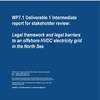
The present deliverable elaborates the current legal framework for offshore wind and grid development on international, European and national level. It is shown that often, the legal framework needs to be adapted in order to facilitate the development of a meshed offshore electricity grid. This is because offshore wind and offshore grid connections have developed strongly in the past few years while the legal framework lags behind. It becomes clear that while solutions have been sought in order to facilitate offshore wind, hybrid solutions that combine interconnection with offshore wind connection are often not yet supported by legal frameworks.
The present deliverable analyses the form and the contents of the target legal framework for the Meshed Offshore Grid (MOG). Considering the form, there is no ‘one size fits all’: different legal instruments are needed to reach a target legal framework that addresses all issues at the best level, that is, following the subsidiarity principle, the most immediate (most local) level at which the solution still is effective.
This deliverable focuses on the development of an economic framework for the offshore grid in terms of three building blocks namely: planning, investment, and operation.
This final report extends the intermediate report D7.3 with the addition of three new topics: incentives, CBCA and the balancing mechanism.
The aim of D7.5 is to identify and propose appropriate recommendations to facilitate investments in a meshed offshore electricity transmission grid in the North Sea. Based on research on the current financing of onshore and offshore electricity transmission grids in the European Union (EU), the investigation and comparison with international practices and the identification of the main financial challenges and investment barriers, a set of recommendations will be developed to overcome these challenges and the investment gaps.
This report focuses on the financing challenges and particularly the parameters that have an impact on financing and provides solutions to address them as well as recommendations on appropriate financing structures that could attract investors and facilitate efficient investmets in a MOG.
This report is the end of three years of research into the requirements of the legal, economic and financial frameworks that could facilitate the cost-effective construction and governance of a MOG. This research is part of the wider PROMOTioN (Progress in Meshed HVDC Offshore Transmission Networks) project, which has also sought to overcome the technical barriers to meshed High Voltage Direct Current (HVDC) networks and assess the relative costs and benefits of meshed offshore grids.
The intention of this deliverable is to summarise the legal, economic, governance and financing issues related to such a unique infrastructure and make recommendations on next steps to develop the necessary frameworks. Further detail on these topics can be found in deliverables D7.2 (Legal Framework), D7.4 (Economic Framework), and D7.6 (Financial Framework). In addition, this document presents new analysis on the system operation of a meshed offshore grid.

Deliverable 7.10: Final Stakeholder Report
The objective of stakeholder interaction, as already outlined in detail in the previous intermediate stakeholder report “D7.7”, is to receive feedback on the intermediate and final results of PROMOTioN’s WP7.
To understand the economic and social consequences of undertaking an offshore grid development in a particular region, it is necessary to perform a cost benefit analysis to assess the value and costs of the meshed offshore grid to society. In order to perform this cost-benefit analysis, a CBA methodology should be employed that sets out a clear set of guidelines to ensure a thorough assessment and comparison of alternative offshore grid solutions.
Demonstration of DC grid protection
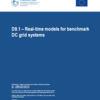
Deliverable 9.1: Real-time models for benchmark DC grid systems
This document describes the base models used for testing of the partially and fully selective protection strategies for demonstration events D9.3 and D9.4 coving the topics of partially selective HVDC protection, and fully selective HVDC protection. The non-selective strategy is covered separately in the modelling report equivalent to this, D9.5, and a further demonstration event D9.6.
The objective of this deliverable is to develop DC grid testing procedures and guidelines for system level testing of future multi-terminal HVDC grids. This deliverable and work package WP9 uses the IEDs with protection algorithms developed in WP4. The protection strategies are tested in real-time environment utilising hardware-in-loop testing methods.
Documentation of the demonstration day of a HVDC protection system.
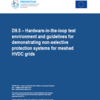
The objective of WP9 is to demonstrate operation of the DC grid protection systems developed in the project using hardware in the loop real-time methods. This WP will integrate results from DC CB modelling (WP6 and WP10) and DC protection development (WP4) including hardware prototype of relay to be tested at The National HVDC Centre facility (Scotland) and demonstration of DC Grid protection system interoperability.
Circuit breaker performance demonstration
The activities in Work package 10 (WP10) continue from the works in WP5. In WP5 several studies have been conducted ranging from system studies for determining the stresses on HVDC circuit breakers and their interaction with the system to designing and implemention of a test circuit supported by simulation and verification in a test laboratory. The next logical step in the design and verification of a test circuit is to test the implemented test circuit with real test objects, prototypes of HVDC circuit breakers. Thus, the main objective of this task is to verify the correct functioning of test circuit as wel as the HVDC circuit breakers of various technologies.

HVDC circuit breakers interact with their surroundings during the current interruption process. This could be the HVDC grid in the practical operation or the test environment during testing at a test facility. In order to study this interaction, access to internal measurements of sub-component stresses is necessary. Due to confidentiality issues it is difficult to get access to internal measurements of manufacturers’ prototype breakers. In addition, the test results with the detailed measurements including test failure conditions are publicly shared within the project consortium. Therefore, an “experimental DC CB” is set-up in KEMA Laboratories by putting commercially available, standard components already in use in the laboratory, combined with a few specially designed systems, together.

This is a document accompanying the data supplied in excel sheet as well as . Besides, the actual test results as obtained in a test laboratory are supplied in a separate file. Therefore, this document is supplying descpription of the contents of those files.

Deliverable 10.4: Document on Test Result Analysis
This document provides detailed analysis of current interruption test results of an experimental DC CB with active current injection set-up in a test laboratory. First, the test arrangement of the experimental DC CB is discussed. Then, the test method and test procedure are briefly presented.
This deliverable provides a generic failure mode analysis of HVDC circuit breakers. The failure modes of various internal components and the subsequent impacts on the overall performance of the HVDC circuit breaker have been discussed for the following technologies of HVDC circuit breakers:
• Capacitor discharge based active current injection mechanical HVDC circuit breaker
• Voltage Source Converter (VSC) assisted resonant current (VARC) HVDC circuit breaker - another realization of active current injection mechanical breaker
• Hybrid mechanical breaker
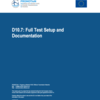
Deliverable 10.7: Full Test Setup and Documentation
A meshed European offshore grid could provide significant benefits to the European energy market. HVDC circuit breakers (CBs) are key equipment for the protection of such grids against the consequences of faults. However, sufficient technology readiness level (TRL) of HVDC CBs needs to be first demonstrated at the full-scale product before deployment. Newly developed test methods and circuits are used to demonstrate the TRL of three different technologies of HVDC CBs at an independent testing facility.
This deliverable aims to contribute to the standardization of testing of HVDC circuit breakers. Its content is based on observations made during testing of experimental versions and prototypes of HVDC circuit breakers of the active current injection type (pre-charged capacitor discharge and VSC assisted resonant current technology) and hybrid technology in the PROMOTioN project.
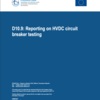
Deliverable 10.9: Reporting on HVDC circuit breaker testing
This document reports on the complete research and development track leading to the public demonstration of HVDC circuit breaker technology. Thus, it can be assumed that the Technology Readiness Level of this technology has been raised to level 8: System complete and qualified.
Harmonization towards standardization

Deliverable 11.1: Harmonization catalogue
In order to fully exploit the technical work within the PROMOTioN project, contribution to harmonisation is strongly encouraged. The purpose of this Harmonization Catalogue is to provide a state-of-the-art regarding harmonization of HVDC systems, identify gaps in this harmonization, and analyse how findings in the PROMOTioN project can contribute. An overall conclusion is that PROMOTioN should contribute to ongoing work in existing best practice and standard working groups rather than establish new working groups.
This document is part of WP11 “Harmonisation towards standardisation” of the PROMOTioN project. The overall objective of WP11 is to support and establish harmonisation of the industry’s best practices, standards and requirements for HVDC grid systems and DC connected offshore wind power plants. This document, deliverable D11.2, includes content from the PROMOTioN project deemed relevant to harmonisation bodies and further standardisation with regard to HVDC systems.
Under the title “Harmonization of wind power plants (WPPs) connected to HVDC systems”, the purpose of this deliverable is to analyze the gaps in harmonization and describe contributions from the PROMOTioN project. Furthermore, the document recommends new standardization initiatives to fill in the identified gaps, focusing on international IEC standards.
The overall objective of WP11 is to support and establish harmonization of the industry’s best practices, standards and requirements for HVDC grid systems and DC connected offshore wind power plants. WP11 aims to ensure that the experience collected through the project – including research, engineering and demonstrations – is utilized in ongoing and future harmonization work.
This report summarises the learning developed under previous work packages in the design, specification and testing of a meshed DC system. A further questionnaire to partners within the PROMOTioN project has also been used to further inform the recommendations that should be made in the above areas of challenge. These outcomes are summarised and discussed in the context of driving process recommendations.
Deployment plan for future European offshore grid

The PROMOTioN project is a European Union funded research and demonstration program that has advanced the HVDC technology required to build, control and protect meshed HVDC transmission offshore grids. In this last phase of PROMOTioN, it is significant to evaluate how much the HVDC technology has been advanced by PROMOTioN. Technology Readiness Level (TRL) is a methodology to systematically assess the maturity level of a specific technology at this project phase. By assessing the TRLs of the HVDC technologies at each development stage, from respective Work Packages, the progress made on advancing these technolgies as well as the current status of the technologies has been independently assessed. The main objective of this document is to report on the TRLs of the HVDC technologies investigated and demonstrated in PROMOTioN, with highlighting the development progress. To achieve a better overview of the status of HVDC technologies, the TRL advancements made by previous studies and the international experience in China is referred as well.
The main objective of Deliverable D12.1 is to provide a preliminary analysis on key technical, financial, economic, legal, regulatory and market barriers and direction for solutions. These solutions are currently being analysed more deeply by the different Work Packages (WPs) of the PROMOTioN project. The analyses gives a snapshot of the results to date and will be refined in the upcoming deliverables12.2 and 12.3. In order to provide a preliminary analysis of barriers hampering the development of a HVDC Meshed Offshore Grid (MOG) and a preliminary related portfolio of solutions, this deliverable looks at:
- The conceptual building blocks for analysing challenges to the future offshore grid as identified in the different Work Packages (WPs) and possible Concepts for a future offshore grid;
- The work in various WPs, to analyse the specific barriers and related solutions, is ongoing.
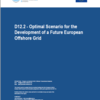
The PROMOTioN project (Progress on Meshed HVDC Offshore Transmission Networks), is a program that has advanced the HVDC technology required to build, control and protect meshed HVDC transmission grids. Within PROMOTioN, non-technical work has also been done to collate and consider the legal & regulatory, economic, financial, market and governmental environment around building such a grid. In this document the analyses and conclusions of the technical and non-technical work are brought together and combined with estimations of the scale of the task to construct an offshore grid for the evacuation of wind generation. It is assumed that all non-technical conditions are favourable to construct such a grid. How and when to create these favourable conditions is discussed in Deliverable 12.3 – Draft Deployment Plan for an HVDC offshore grid.
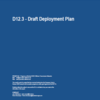
Deliverable 12.3: Draft Deployment Plan
The aim of this document is to translate the results of the PROMOTioN project into practical and executable advice to the European Commission and other stakeholders to overcome barriers and advance the deployment of a MOG. This document includes a roadmap for the development of a MOG, pinpointing key grid development characteristics in each time period. It then summarises the key recommendations for all technical and non-technical aspects of a MOG and finally assigns these to stakeholders, thereby combining the anticipated development of the grid with the recommendations. An overview of the process to establish this deployment plan is given in Figure 1 below, where it is shown that the Cost-Benefit Analysis (CBA), technology recommendations and non-technological recommendations is combined into the deployment plan.
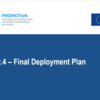
Deliverable 12.4: Final Deployment Plan
The PROMOTioN programme (Progress on Meshed HVDC Offshore Transmission Networks) has advanced the HVDC technology required to design, build, operate and protect meshed HVDC transmission grids, namely HVDC grid and converter control systems, direct current circuit breakers (DCCBs), HVDC grid protection systems and HVDC Gas Insulated Switchgear (GIS)1. Alongside this, recommendations have been developed for the legal & governance frameworks needed for a meshed offshore grid (MOG), the necessary economic and financial rules required to attract sufficient investment and fairly remunerate owners, operators and users of the grid, and the market and governmental actions necessary to facilitate an ordered roll-out.
This document, Deliverable 12.4 - Final Deployment Plan, brings together these findings and recommendations into a roadmap to 2050, describing the steps required to develop an offshore grid capable of integrating offshore wind farms and evacuating large quantities of wind energy to shore, as well as providing interconnection between countries bounding the North Seas, and providing onshore AC grid reinforcements by means of offshore DC connections2. The aim of this document is to translate these recommendations into practical and executable next steps for the European Commission and other stakeholders to overcome barriers and advance the deployment of a MOG.
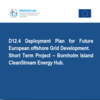
This document is a supplement to the PROMOTioN project deliverable D12.4 Deployment Plan for future European Offshore Grids ("the Deployment Plan"). The PROMOTioN Deployment Plan is intended to give guidance to stakeholders in which choices are best to realise an efficient, cost effective and secure offshore grid to ensure optimal evacuation of wind generation to shore and interconnection of North Sea countries; what steps are required to steer parties towards a selected scenario; and when these steps need to be taken (short-, medium- or long term).
The primary focus of this supplement is on one of the short-term projects, namely CleanStream – an energy hub to be located on the Danish island of Bornholm. Some of the opportunities of this project are to deploy & pilot technical, regulatory, market and economic solutions in such a way that complexity increases gradually and risks are manageable.
Dissemination

This deliverable provides the executive summary of the project interim report and gives an overview of the work done within the PROMOTioN project.

This deliverable provides the executive summary of the second reporting period from January 2017 - June 2018. It summarises the project interim report and gives an overview of the work done within the PROMOTioN project in the mentioned period.
Download Deliverable 13.5 - Reporting Period January 2017 - June 2018 (PDF 117 KB)
Project management
PROMOTioN held half yearly meetings of the whole consortium throughout the project's duration.
Except for the kick-off meeting and the final meeting, these half yearly meetings consisted of 3 parts with a duration of 2-3 days in total:
- WP meetings: different sessions for each work package
- Plenary session: joint meeting for presenting the progress for each work package
- General assembly: discussing organizational matters and decisions taken, including voting if necessary
Further there were two Review meetings in Brussel with the European Commission (March 2017 & October 2018), a reference Group meeting in Sept 2016 as well as the Midterm conference in Jun 2018.
The presentations given during the Plenary sessions and General assemblies as well as the minutes of the consortium meetings are featured in separate files below.
PROMOTioN's Final Conference was orriginally planned as a live-event in May 2020 but needed to be moved online due to health & savety meaures reagarding COVID-19.
- Kick off meeting, Arnhem, 21-22.1.2016 (.pdf 7.8MB)
- Half yearly meeting, Stockholm, 14-15.6.2016 (.pdf 9.5MB)
- Reference Group meeting, Hamburg, 29.9.2016 (.pdf 5.1MB)
- Half yearly meeting, Berlin, 29.11.–1.12.2016 (.pdf 6.3MB)
- Review meeting, Brussels, 20-21.3.2017 (.pdf 8MB)
- Half yearly meeting, Aberdeen, 31.5.-2.6.2017 (.pdf 4MB)
- Half yearly meeting, Valencia, 20-22.11.2017 (.pdf 7.2MB)
- Mid-term conference, Amsterdam & Half yearly meeting, Groningen, 6-8.6.2018 (.pdf 9.9MB)
- Review Meeting & General Assembly, Brussels, 11-12.10.2018 (.pdf 17.3MB)
- Half yearly meeting Lyon, 10-12.12.2018 (.pdf 13MB)
- Half yearly meeting Aachen, 11-13.6.2019 (.pdf 16MB)
- Half yearly meeting Roskilde, 2-4.12.2019 (.pdf 16.7MB)
- Final Conference Event Series (please see here)

Deliverable 14.4: Exploitation plan
The Exploitation Plan (deliverable D14.4) provides definitions on types of project results and an overview of the most significant exploitable results after 2.5 years of project progress. The plan also proposes two applicable conceptual frameworks for use during result exploitation. In the next 18 months, more project results are expected.

Deliverable 14.5: Exploitation of Results
This report starts with introductory chapter 1 by giving context and background of PROMOTioN. Motivation, approach and process is provided towards the reported key exploitable results (KERs). The following chapter 2 introduces the ESS framework that has been used by the beneficiaries for training and to structure and report on their key exploitable results. In chapter 3 the key exploitable results of the beneficiaries are presented. In order to put the set of key exploitable results in the perspective of the project’s core objectives, chapter 4 provides an overview how they contribute to these different objectives. The reports ends in chapter 5 with a list of abbreviations used.
HVDC GIS technology demonstrator
The global trend towards decarbonisation and increased penetration of renewable energy resources has posed new challenges. The need to connect offshore renewable resources in deeper waters and longer connections to shore has led to increased demand for Voltage Source HVDC converter technology. Compact DC switchgear is needed for HVDC cable connections to remote offshore wind farms and onshore projects close to city centres. The compact design of gas insulated HVDC systems is therefore very attractive for applications where space comes at a high premium. Also, HVDC GIS based solutions will need to be developed to facilitate the realization of multi-terminal meshed HVDC grids. It has been estimated that space requirements for switchgear can be reduced by 70% - 90% compared to air insulated switchgear (AIS). This could lead to space saving of up to 10% for overall offshore platform.
HVDC GIS has been introduced as a promising technology where the benefits of the proven HVDC transmission and AC gas-insulated switchgear/systems can be combined. Up to the present time, no international standards describing the requirements, applicable tests and test procedures of HVDC gas insulated systems (GIS) have been developed. This document provides a general guideline for listing the tests that shall be applied to HVDC GIS to verify their designed performance. Focus is given to the dielectric test requirements due to the different nature of DC electric fields in GIS compared to AC fields. Additionally, due to lack of operational experience on HVDC GIS, a long-term test method to prove the dielectric performance of a prototype installation under in-service conditions is described. The described method will be applied to a prototype HVDC GIS which will be built by a GIS manufacturer (task 15.3 of PROMOTioN) based on the specifications and ratings that are defined in deliverable D15.1.
PROMOTioN aims to increase the Technology Readiness Level (TRL) for HVDC GIS, which means that the perspectives for the DC GIS technology are to soar in the short or medium term. An increase of renewable sources especially offshore will yield a higher demand for DC GIS technology and in turn, this implies increasing demands on components, materials and M&D tools. Currently, only few HVDC GIS are in operation worldwide. In consequence, little service experience and few information about the long-term capability of this type of technology are available. Additionally, there are no international standards established for specifying and testing such systems. WP 15 is set off to tackle this lack of laboratory and field experience as a way to anticipate oncoming needs. The efforts as part of the D15.3 are to be focused on several levels, such as the laboratory and the component level.
This test report is over a prototype installation test on HVDC GIS (SF6), which is carried in KEMA laboratories under the PROMOTiON project. This test is to indicate the long-term performance of the complete HVDC GIS.
The EU funded project "Progress on Meshed HVDC Offshore Transmission Networks" (PROMOTioN) addresses the challenges for meshed HVDC offshore network development, aiming for an increase in the Technology Readiness Level (TRL) for HVDC GIS. Few HVDC GIS are in operation worldwide, resulting in little service experience and information about the long-term capability of this technology. The Working Package 15 (WP15) performed a DC GIS Technology Demonstrator to tackle this lack of laboratory and field experience as a way to anticipate oncoming needs. Several cornerstone tasks have been defined to achieve such a goal, which include research on monitoring and diagnostics techniques for HVDC GIS (deliverable D15.3 and D15.5).
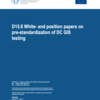
As a result of significant developments and space-saving benefits in switchgear systems for HVDC applications, the EU funded project “Progress on Meshed HVDC Offshore Transmission Networks” (PROMOTioN) with its aim to increase the Technology Readiness Level (TRL) of HVDC GIS for a meshed offshore grid. Due to the limit of operating experience to 250 kV, the Work Package (WP) 15 of PROMOTioN set up to demonstrate the long-term performance of a complete HVDC gas-insulated metal-enclosed system. Due to the lack of standardisation of HVDC GIS, this paper aims to summarise the experience and knowledge gained from all participants of WP 15, which includes prototype installation test, novel approaches of partial discharge (PD) measurements and eco-efficient SF6 alternatives for HVDC GIS, while to contribute to standardise testing DC GIS for power transmission at a rated voltage of 550 kV and higher.
This document presents the experimental results about long term partial discharge behavior of defects with SF6 and SF6 alternative gases under DC voltage. Two kinds of defects: a protrusion and a metallic particle on insulator surface and different gases: SF6, FN-CO2 mixture, FK-Air mixture with different pressures were investigated with different measuring and monitoring systems such as conventional method, direct PD pulse current measurement, UHF and magnetic sensors. The PD behavior of different defects and a comparison of different gases were then reported.
MMC test bench demonstrator
Today, the experience regarding the operation and control of meshed DC grids as well as their interaction with AC transmission systems and offshore wind farms is limited. To enhance the confidence in the controllability of such systems, a DC network demonstrator embedded in a real-time simulation environment of wind farms and AC grids is set up within work package 16. Furthermore, the resonance behaviour of a wind turbine converter from a leading manufacturer and the demonstrator’s multilevel converters will be analysed. Deliverable 16.1 specifies all test cases, which will be considered in this context.
This report summarises the learning developed under previous work packages in the design, specification and testing of a meshed DC system. A further questionnaire to partners within the PROMOTioN project has also been used to further inform the recommendations that should be made in the above areas of challenge. These outcomes are summarised and discussed in the context of driving process recommendations.
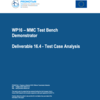
Deliverable 16.4: Test Case Analysis
Within this deliverable, the HVDC converter controls developed in WP2 are demonstrated using a 4-terminal bipolar configuration with (lab-scaled) power hardware components. Therefore, a Power-Hardware-in-the-Loop (PHiL) test bench is set up. The results obtained from the laboratory setup are compared with its corresponding lab-scale simulation model and a simulated full-scale model. The comparison shows a high degree of conformity between the test bench results and the simulated models, and thereby increase the confidence for the developed converter control concepts. Moreover, two fault clearing approaches in HVDC networks are demonstrated using the test bench: A protection strategy based on fault blocking converters and a protection strategy based on fast DC circuit breakers. The obtained results show a high degree of consistency with the corresponding simulation models and thereby confirm the theoretical feasibility of the fault clearing approach shown in WP4 as well as the fault clearing approach with the DC-bypass concept, respectively.
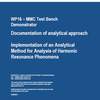
The main objective of this document is to present a step-by-step theoretical derivation of the state-of-the-art input admittance of the grid-connected power electronics applications (i.e. wind turbine generators, HVDC, and Diode rectifier units) relevant for the offshore wind power integration. The reader is suggested to treat this document as a summary of the state-of-the-art input admittance modelling of grid-connected power electronics. It is by no means the purpose of this document to publish or create a new methodology for the harmonic resonance analysis. The sequel document D16.4 will elaborate on the model validation of the input admittance modelling presented in this document and apply the methodology for the harmonic resonance analysis pertaining to offshore wind farm grid integration. This deliverable will also include the frequency domain modelling of additional components, such as cables.






